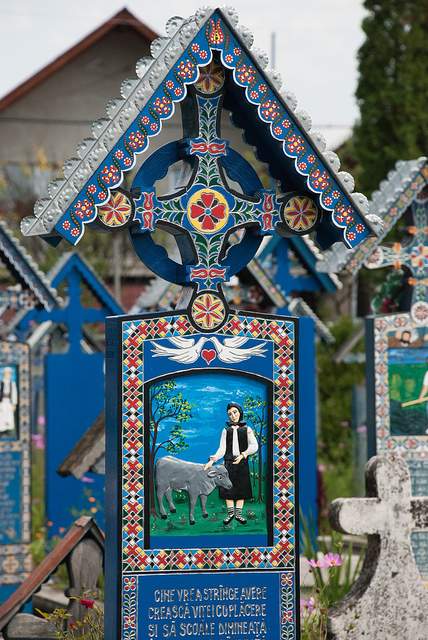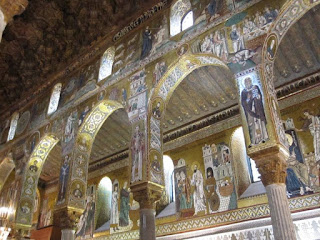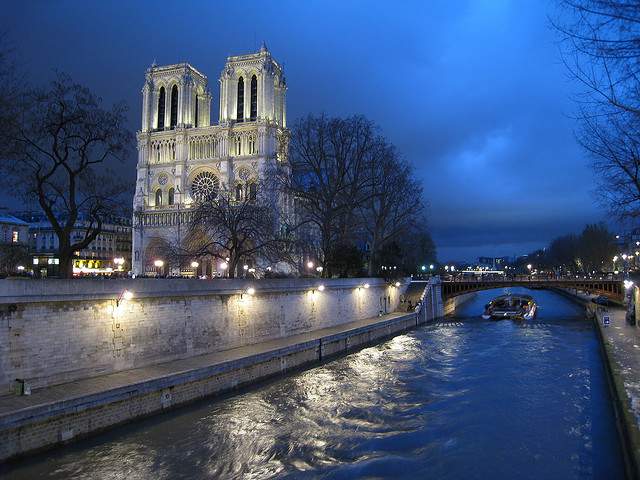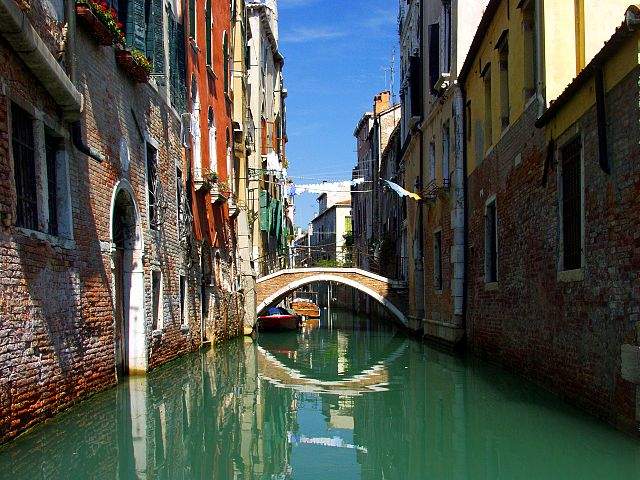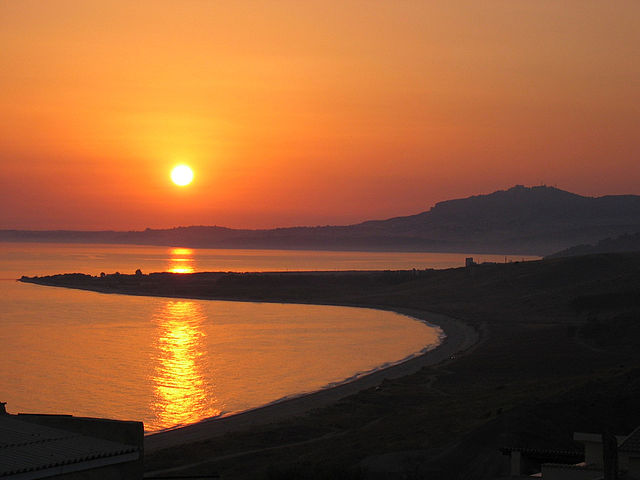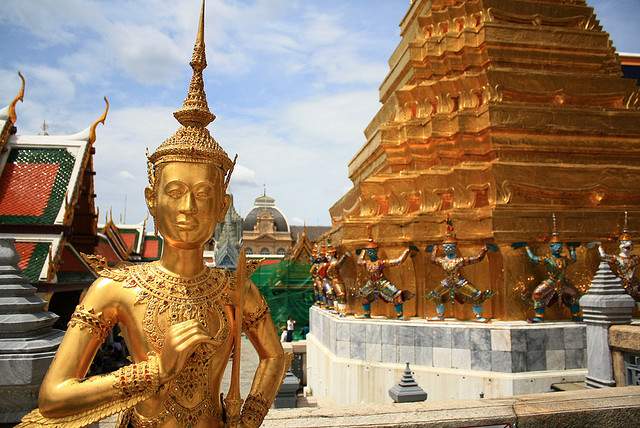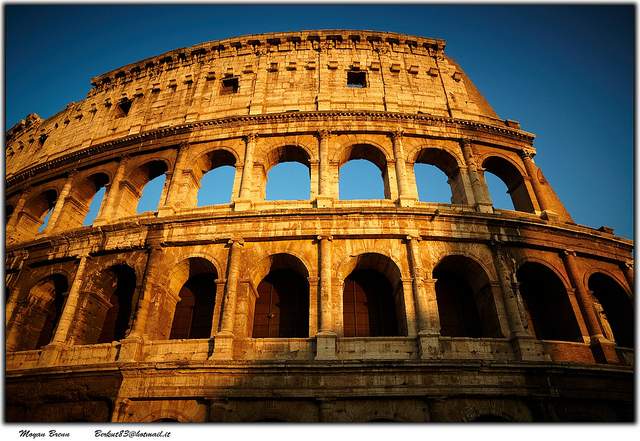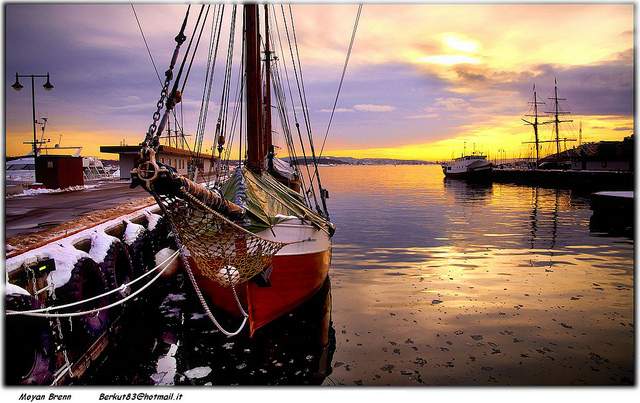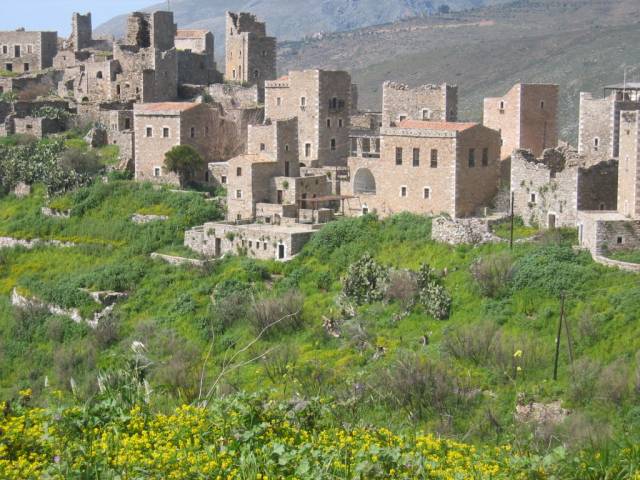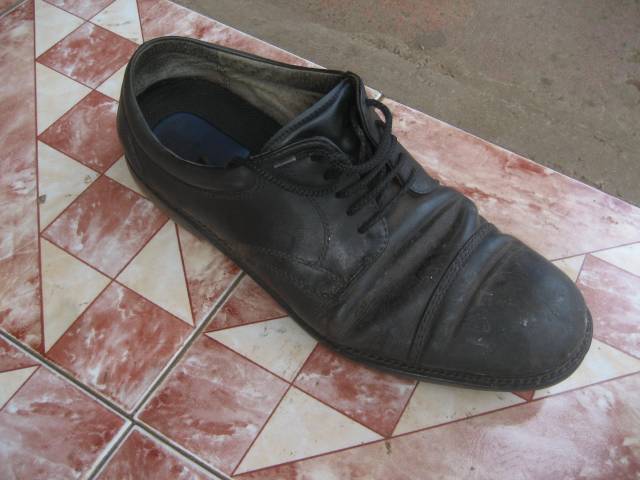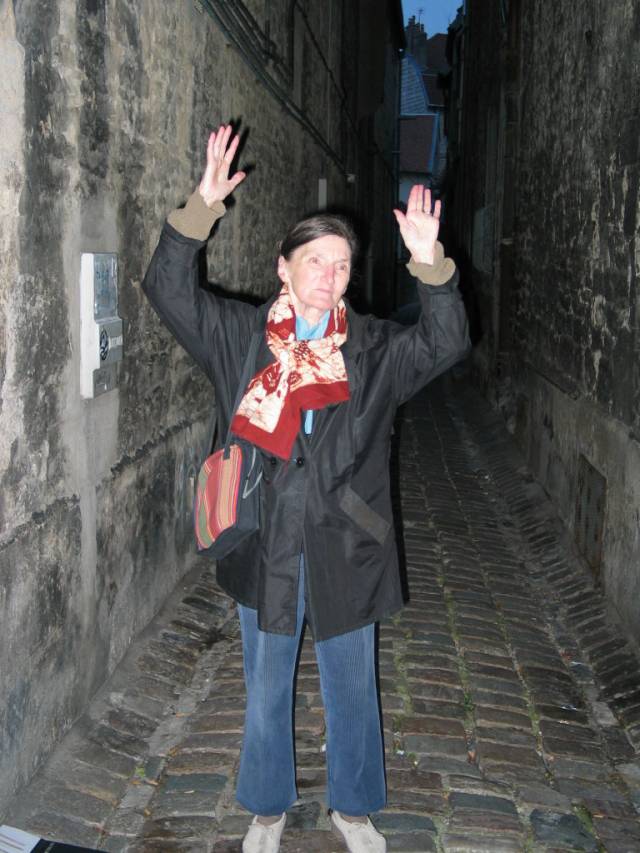by Anne Supsic
Published on the Viator Travel Blog on November 12, 2012
Multi-generational travel is quite the buzz word in tourism these days, but it’s really just a fancy term for getting the whole extended family together for a trip. That’s not to say that this is easy though. Planning our 12-person, 3-generation cruise to Bermuda was one of the most difficult projects I’ve ever undertaken (and I was a Project Manager for 25 years!). But the results exceeded every expectation.
Here are eight tips for enjoying a multi-generational trip of your own:
You can easily spend an entire year preparing for a trip like this. By starting early, you allow plenty of time to work through all the issues and assess the level of commitment from your family. In our case, everyone was enthusiastic from the start, but we still had to deal with different travel styles, school and work schedules, and various personal concerns (including fear of flying). Do not underestimate the work required – an extended family trip entails a Herculean planning effort that will often feel as if you are herding cats.
There are lots of good travel destinations suitable for large family groups from island getaways to Disney World. We considered them all but finally settled on a cruise to Bermuda.The island of Bermuda had an immediate appeal for us with its low-key family-oriented character and its location close to our eastern seaboard.
Cruising offered some obvious advantages: plenty of activities for everyone and no worries about planning meals for our tribe of twelve. Plus in our case, we were able to avoid air travel since our cruise departed from Cape Liberty, New Jersey about 100 miles from our home. But other, more lasting, benefits only became apparent after we were onboard the ship.
Once you have chosen a destination, you need to focus on three goals: selecting a date, getting a total commitment from each family member, and obtaining all required documents for everyone. Be sure to solicit feedback when you set your date – you will need to consider school calendars, work schedules, and personal preferences.
If you are traveling outside the country, a top priority will be making sure that everyone has a passport. This effort alone took us almost six months. As an additional safeguard, we stored all the documents in our home–didn’t want anyone showing up on departure day sans passport!
Another important consideration is whether your group includes minor children traveling without both their parents–a common occurrence in today’s ‘modern families.’ When one parent takes a minor child out of the country, it is a good idea to obtain a notarized Letter of Parental Consent from the missing parent. Sample Letters of Parental Consent are available online at websites such as Single Parent Travel. In addition, if the child’s last name is different from the last name of the parent with whom they are traveling, you must bring the child’s birth certificate (to prove the link between parent and child via legal documentation).
Note that a Consent Letter signed by both parents and a Medical Authorization are also recommended for grandparents taking a minor child out of the country.
And don’t forget to purchase Trip Insurance. We bought our trip insurance through the cruise line to ensure that if one family member had an emergency, we could cancel the trip for the whole gang. As part of gaining commitment, it is critical that you explain to your family that trip insurance only covers true emergencies–no last minute take backs allowed!
During the long months before your trip, you can keep up the enthusiasm by sharing tidbits of trip information with your family. Prior to our cruise, we sent ‘Cruise Countdown’ emails to our crew, preparing them by discussing topics such as shipboard amenities (e.g. three swimming pools and a rock climbing wall) and interesting facts about Bermuda, like the islanders referring to themselves as ‘Onions.’
Another idea is to give the little ones trip-oriented gifts for birthdays or holidays. Snorkeling equipment and laminated fish identification cards were perfect for our soon-to-be beach bums. But the best pre-trip present, for any age group, is a travel journal. Not only does journaling develop writing skills but it helps you to capture your impressions and relive your experiences creating the most cherished souvenir of all.
You can minimize the risk of late arrivals (and save yourself some major stress) by providing all transportation. The best way to simplify the transport issue is to contact a limousine service. Have all family members meet at one location and then proceed to your departure point (i.e. airport or cruise port) in one vehicle.
For our trip to the pier in New Jersey, I arranged for an executive van to transport all of us in style. Everyone gathered at our home well ahead of time (with a home cooked breakfast providing an added incentive). Some even arrived the night before to get a jump on the festivities. Then on the morning of our departure, we all climbed into the van for the ride to the ship. This was a practical solution, and a fun way to kick off our adventure.
The secret to a successful multi-generational trip is finding a balance between individual and group time. You don’t want to suffocate your family members with constant togetherness; it’s important to give each person some room to breathe. One of the many advantages of cruising was that our group had the run of the ship with a remarkable array of activities for every taste from miniature golf to ice skating or ping pong. However, it’s also a good idea to build in some time together. In our case, we had reserved seating in the Main Dining Room each night so we could enjoy one family meal together every day. This was a real treat and gave everybody a chance to exchange stories and catch up on the day’s happenings.
To provide a basic structure for the trip, I created a one-page ‘Bermuda Schedule’ that I distributed to everyone. This simple schedule outlined the key events for each day, such as when we would dock in Bermuda, details on prearranged excursions, and a reminder to be back on board by 3:30 p.m. on the day the ship sailed for home! The schedule also included our 6:00 p.m. family dinner time and a list of each family’s cabin numbers.
We thought Bermuda was an ideal location for a family group because this small island is easy to get around and yet offers plenty of activities for every age and interest. Of course the beaches are the primary draw, but the younger set can also explore an underground cave, check out historical reenactments in St George, or roam around an old British fort. Active types may want to hike the Bermuda Railway Trail or spend an afternoon on the golf course, while the more sedate can browse through the Masterworks Museum of Bermuda Art or wander the beautiful Botanical Gardens.
For our two days in Bermuda, we scheduled a snorkeling outing as our one group activity, and we also gave each family the option of one excursion on their own. Two of our couples opted for horseback riding along the beach while the rest of us rented a minivan for an island tour. Later that day, we all ended up on the South Island beaches reveling in the talcum-soft pink sand and the crystalline blue waters.
The reward for all your hard work will be having your whole family gathered around you. For me, standing together on the deck of that ship for the first time (feeling relieved and amazed that everyone was there) will always rank near the top of my ‘great moments in life’ list. And that was just the beginning. The best thing about a multi-generational family adventure is the opportunity for day-after-day togetherness (without the distractions of hectic schedules and handheld electronics). Like us, your utmost joy will probably be simply watching your family enjoying each other.
We could never have predicted how much our family would love being on a ship. There is something magical about being surrounded by nothing but the endless rippling sea. Our greatest pleasures were the simplest ones. Eating dinner together each night was a delight, and the hot tub became a favorite after-dinner hangout. The helipad served as our very own ‘stargazing central’ – a perfect spot at the bow of the ship where aspiring astronomers and ardent romantics could witness a starry, starry night (with no competing man-made lighting).
Our family voyage was not a perfect trip – toilets overflowed and choppy water thwarted our plans for snorkeling over a shipwreck. But it was a perfect family experience. My husband and I have traveled all over the world, and this was our best trip ever.
Photos may not be used without permission.
Published on the Viator Travel Blog on November 12, 2012
Multi-generational travel is quite the buzz word in tourism these days, but it’s really just a fancy term for getting the whole extended family together for a trip. That’s not to say that this is easy though. Planning our 12-person, 3-generation cruise to Bermuda was one of the most difficult projects I’ve ever undertaken (and I was a Project Manager for 25 years!). But the results exceeded every expectation.
Here are eight tips for enjoying a multi-generational trip of your own:
1. Start your planning early
2. Choose your destination wisely
 |
| At the dock in Bermuda. Photo credit: Lorraine Carey |
Cruising offered some obvious advantages: plenty of activities for everyone and no worries about planning meals for our tribe of twelve. Plus in our case, we were able to avoid air travel since our cruise departed from Cape Liberty, New Jersey about 100 miles from our home. But other, more lasting, benefits only became apparent after we were onboard the ship.
3. Obtain commitments and get your documents in order
Once you have chosen a destination, you need to focus on three goals: selecting a date, getting a total commitment from each family member, and obtaining all required documents for everyone. Be sure to solicit feedback when you set your date – you will need to consider school calendars, work schedules, and personal preferences.
If you are traveling outside the country, a top priority will be making sure that everyone has a passport. This effort alone took us almost six months. As an additional safeguard, we stored all the documents in our home–didn’t want anyone showing up on departure day sans passport!
Another important consideration is whether your group includes minor children traveling without both their parents–a common occurrence in today’s ‘modern families.’ When one parent takes a minor child out of the country, it is a good idea to obtain a notarized Letter of Parental Consent from the missing parent. Sample Letters of Parental Consent are available online at websites such as Single Parent Travel. In addition, if the child’s last name is different from the last name of the parent with whom they are traveling, you must bring the child’s birth certificate (to prove the link between parent and child via legal documentation).
Note that a Consent Letter signed by both parents and a Medical Authorization are also recommended for grandparents taking a minor child out of the country.
And don’t forget to purchase Trip Insurance. We bought our trip insurance through the cruise line to ensure that if one family member had an emergency, we could cancel the trip for the whole gang. As part of gaining commitment, it is critical that you explain to your family that trip insurance only covers true emergencies–no last minute take backs allowed!
4. Keep up the enthusiasm
During the long months before your trip, you can keep up the enthusiasm by sharing tidbits of trip information with your family. Prior to our cruise, we sent ‘Cruise Countdown’ emails to our crew, preparing them by discussing topics such as shipboard amenities (e.g. three swimming pools and a rock climbing wall) and interesting facts about Bermuda, like the islanders referring to themselves as ‘Onions.’
Another idea is to give the little ones trip-oriented gifts for birthdays or holidays. Snorkeling equipment and laminated fish identification cards were perfect for our soon-to-be beach bums. But the best pre-trip present, for any age group, is a travel journal. Not only does journaling develop writing skills but it helps you to capture your impressions and relive your experiences creating the most cherished souvenir of all.
5. Provide transportation
You can minimize the risk of late arrivals (and save yourself some major stress) by providing all transportation. The best way to simplify the transport issue is to contact a limousine service. Have all family members meet at one location and then proceed to your departure point (i.e. airport or cruise port) in one vehicle.
For our trip to the pier in New Jersey, I arranged for an executive van to transport all of us in style. Everyone gathered at our home well ahead of time (with a home cooked breakfast providing an added incentive). Some even arrived the night before to get a jump on the festivities. Then on the morning of our departure, we all climbed into the van for the ride to the ship. This was a practical solution, and a fun way to kick off our adventure.
6. Balance your time
The secret to a successful multi-generational trip is finding a balance between individual and group time. You don’t want to suffocate your family members with constant togetherness; it’s important to give each person some room to breathe. One of the many advantages of cruising was that our group had the run of the ship with a remarkable array of activities for every taste from miniature golf to ice skating or ping pong. However, it’s also a good idea to build in some time together. In our case, we had reserved seating in the Main Dining Room each night so we could enjoy one family meal together every day. This was a real treat and gave everybody a chance to exchange stories and catch up on the day’s happenings.
To provide a basic structure for the trip, I created a one-page ‘Bermuda Schedule’ that I distributed to everyone. This simple schedule outlined the key events for each day, such as when we would dock in Bermuda, details on prearranged excursions, and a reminder to be back on board by 3:30 p.m. on the day the ship sailed for home! The schedule also included our 6:00 p.m. family dinner time and a list of each family’s cabin numbers.
7. Find the perfect excursions
We thought Bermuda was an ideal location for a family group because this small island is easy to get around and yet offers plenty of activities for every age and interest. Of course the beaches are the primary draw, but the younger set can also explore an underground cave, check out historical reenactments in St George, or roam around an old British fort. Active types may want to hike the Bermuda Railway Trail or spend an afternoon on the golf course, while the more sedate can browse through the Masterworks Museum of Bermuda Art or wander the beautiful Botanical Gardens.
For our two days in Bermuda, we scheduled a snorkeling outing as our one group activity, and we also gave each family the option of one excursion on their own. Two of our couples opted for horseback riding along the beach while the rest of us rented a minivan for an island tour. Later that day, we all ended up on the South Island beaches reveling in the talcum-soft pink sand and the crystalline blue waters.
8. Relax and enjoy
The reward for all your hard work will be having your whole family gathered around you. For me, standing together on the deck of that ship for the first time (feeling relieved and amazed that everyone was there) will always rank near the top of my ‘great moments in life’ list. And that was just the beginning. The best thing about a multi-generational family adventure is the opportunity for day-after-day togetherness (without the distractions of hectic schedules and handheld electronics). Like us, your utmost joy will probably be simply watching your family enjoying each other.
We could never have predicted how much our family would love being on a ship. There is something magical about being surrounded by nothing but the endless rippling sea. Our greatest pleasures were the simplest ones. Eating dinner together each night was a delight, and the hot tub became a favorite after-dinner hangout. The helipad served as our very own ‘stargazing central’ – a perfect spot at the bow of the ship where aspiring astronomers and ardent romantics could witness a starry, starry night (with no competing man-made lighting).
Our family voyage was not a perfect trip – toilets overflowed and choppy water thwarted our plans for snorkeling over a shipwreck. But it was a perfect family experience. My husband and I have traveled all over the world, and this was our best trip ever.
Photos may not be used without permission.
– Anne Supsic






